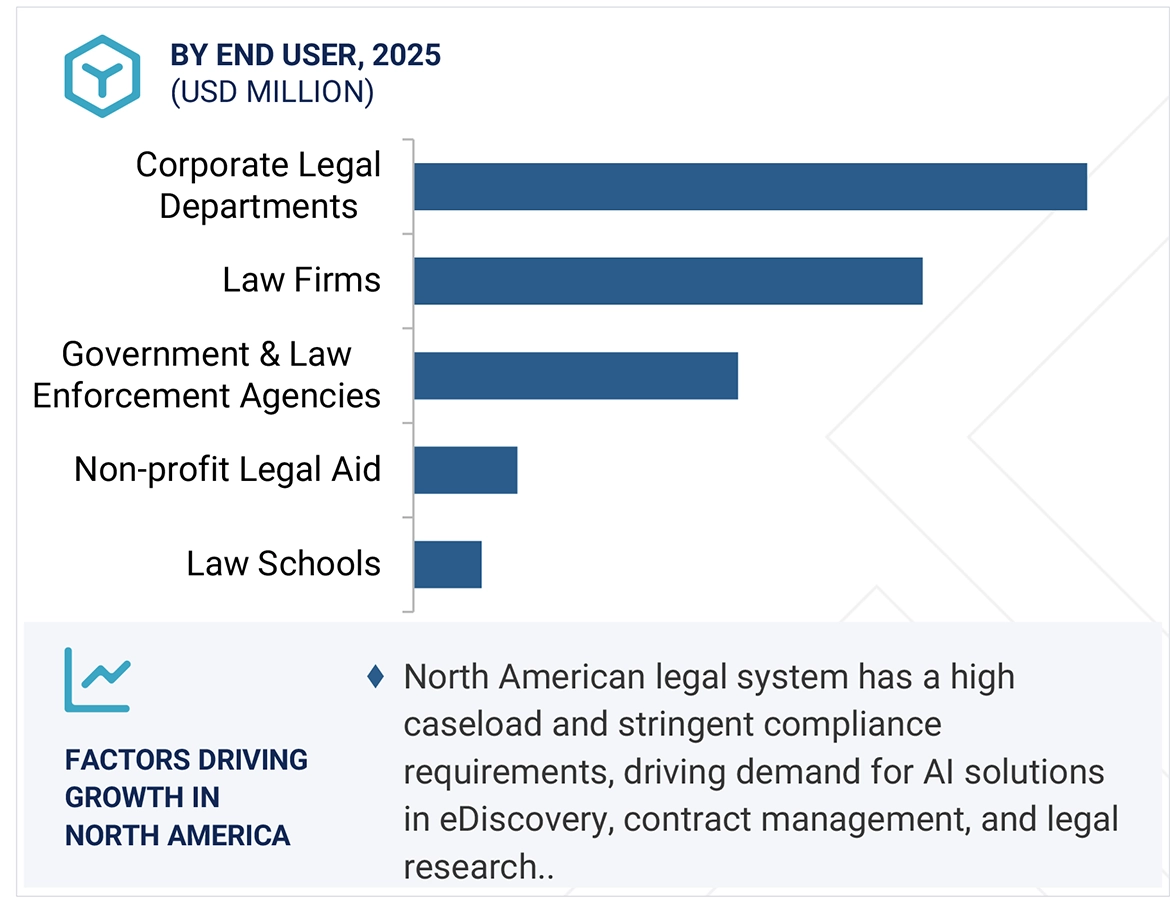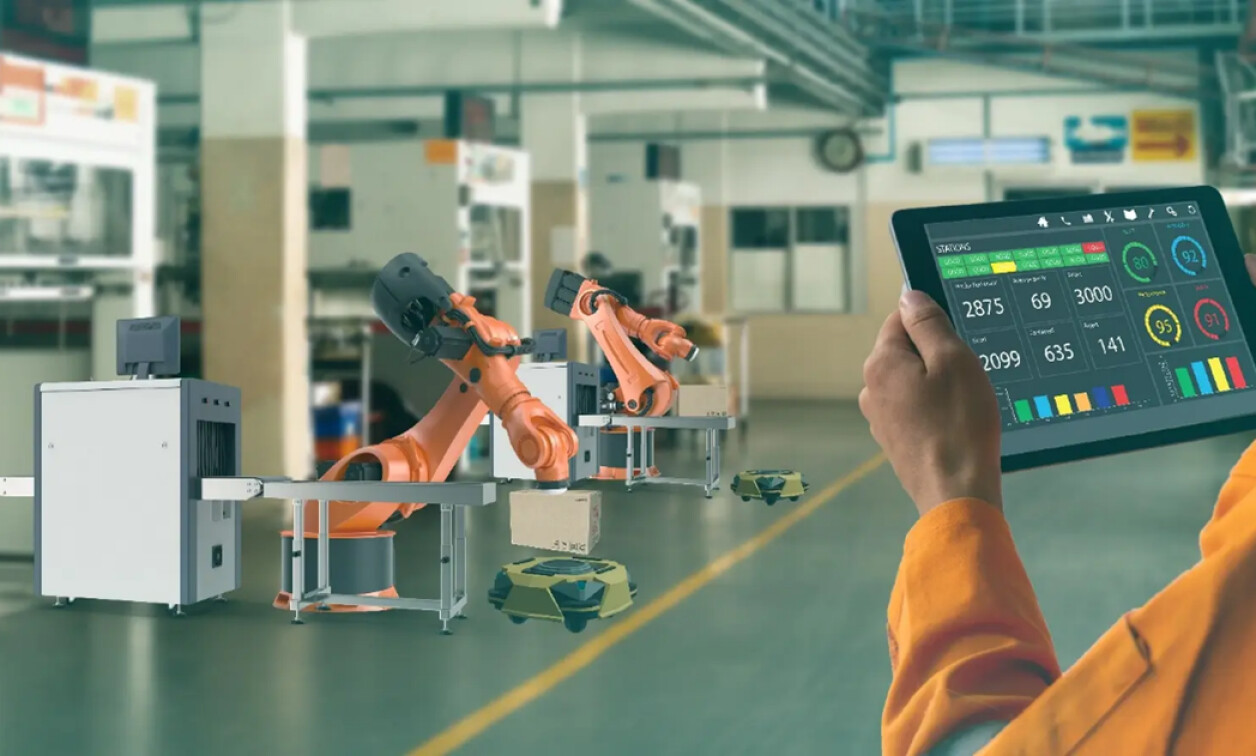Eco-Chic The Top Sustainable Fashion Brands
Patagonia: The Pioneer of Sustainable Outdoor Wear
Patagonia has long been a leader in the sustainable fashion movement. Their commitment extends beyond simply using organic cotton; they actively work to reduce their environmental footprint across their entire supply chain. From their recycled materials to their fair labor practices and environmental activism, Patagonia sets a high bar for the industry. They’re transparent about their sourcing, manufacturing processes, and even the environmental impact of their products, empowering consumers to make informed choices. Their repair program also encourages longevity, reducing the need for frequent replacements.
Eileen Fisher: A Commitment to Circularity and Timeless Style
Eileen Fisher’s dedication to sustainability is deeply ingrained in their brand philosophy. They champion timeless designs that transcend fleeting trends, encouraging customers to hold onto their garments longer. Their Renew program allows customers to return used Eileen Fisher clothing for resale, recycling, or donation, creating a circular system that keeps garments in use and out of landfills. This commitment to circularity, combined with their use of sustainable materials, makes Eileen Fisher a compelling choice for the eco-conscious consumer.

People Tree: Fair Trade and Organic Practices at the Forefront
People Tree is a pioneer in fair trade fashion. They work directly with farmers and artisans, ensuring fair wages and safe working conditions throughout their supply chain. Their commitment to organic cotton and other sustainable materials is unwavering, minimizing the environmental impact of their production processes. People Tree’s focus on traditional techniques and handcrafted details adds a unique and ethical dimension to their clothing, making it more than just a purchase, but a contribution to a fairer and more sustainable world.
Stella McCartney: Luxury Meets Sustainability
Stella McCartney proves that luxury and sustainability can coexist. She’s a vocal advocate for ethical and sustainable fashion, consistently using innovative and sustainable materials in her designs. From recycled fabrics to innovative vegan alternatives to leather, McCartney pushes the boundaries of what’s possible in high-fashion, showcasing that sustainable practices don’t have to compromise on style or quality. Her dedication to transparency further solidifies her position as a leader in the eco-chic movement.
Outerknown: Sustainable Surfwear with a Focus on Transparency
Founded by Kelly Slater, Outerknown focuses on creating high-quality, sustainable surfwear. They’re committed to transparency, openly sharing information about their supply chain and manufacturing processes. This includes detailed information on the origin of their materials and the environmental impact of their production. Their use of recycled materials and commitment to fair labor practices underscores their dedication to creating both stylish and responsible clothing.
Thought Clothing: Organic and Sustainable Basics with a Focus on Comfort
Thought Clothing offers a wide range of comfortable, stylish, and sustainable basics. They emphasize the use of organic cotton, Tencel, and other eco-friendly materials in their production. Their designs are simple and versatile, promoting longevity and reducing the need for frequent purchases. Thought’s commitment to fair wages and ethical manufacturing practices further reinforces their dedication to creating clothing that’s both good for the planet and for the people who make it.
Veja: Sustainable Sneakers with a Focus on Social and Environmental Responsibility
Veja stands out in the sneaker industry for its commitment to sustainable and ethical practices. They source their materials responsibly, using organic cotton, wild rubber from the Amazon, and recycled materials. They also collaborate directly with producers and ensure fair wages and safe working conditions. Veja’s transparent approach and focus on social and environmental responsibility make them a popular choice for consumers seeking stylish and ethically produced footwear.
Reformation: Sustainable Fast Fashion, Reimagined
Reformation approaches fast fashion with a conscious twist. They aim to produce stylish and trendy clothing with a smaller environmental footprint. While the “fast fashion” model inherently presents challenges, Reformation strives to minimize its impact through sustainable materials, ethical production, and carbon-neutral shipping. Their dedication to transparency and showcasing their sustainability efforts sets them apart in the often-criticized fast fashion industry. Please click here to learn about the best sustainable fashion brands.
Top Local Car Customization Shops Your Ultimate Guide
Finding the Right Shop for Your Needs
Choosing a car customization shop is a big decision. You’re entrusting your pride and joy to someone else, so you want to make sure they’re reputable, skilled, and have a style that aligns with your vision. Consider what kind of customizations you’re looking for. Are you after a full-blown restoration, a subtle performance upgrade, or a complete aesthetic overhaul? Different shops specialize in different areas, so research is key. Look at their online portfolios, read reviews from past clients, and even visit the shop in person if possible to get a feel for their workspace and the quality of their work. Don’t hesitate to ask questions about their experience, certifications, and warranty policies.
Specializing in Performance Enhancements
For those seeking to unleash the beast under the hood, certain shops specialize in performance modifications. These shops often employ experienced mechanics with expertise in engine tuning, supercharger installations, and other performance-boosting techniques. They might deal with everything from subtle ECU remapping to extensive engine rebuilds, depending on your car and your goals. Look for shops with certifications from reputable organizations in the automotive performance field. This demonstrates their commitment to quality and their understanding of complex engine systems. Expect to pay a premium for this level of expertise, as performance upgrades often involve specialized parts and intricate labor.

The Art of Automotive Aesthetics
If you’re more interested in the visual appeal of your car, you’ll want to find a shop that specializes in cosmetic upgrades. These shops often handle paint jobs (everything from simple repainting to elaborate airbrushing), custom body kits, vinyl wraps, and interior modifications like upholstery and custom dashboards. Their expertise lies in transforming the appearance of your vehicle, often creating unique and eye-catching designs. When choosing a shop for aesthetic upgrades, pay close attention to their portfolio. Do their past projects align with your style? Do they have experience with the type of car you own? Good communication is crucial here, as you’ll need to work closely with the shop to bring your vision to life.
Restorations: Bringing Classics Back to Life
Restoring a classic car is a labor of love, requiring both meticulous attention to detail and extensive mechanical knowledge. Shops specializing in restorations are equipped to handle everything from rust repair and bodywork to engine rebuilds and interior reupholstery. They often have access to rare parts and possess the skills necessary to return a classic car to its former glory. The process can be lengthy and expensive, but the result is a beautifully restored vehicle that is sure to turn heads. Find a shop with a proven track record in classic car restoration and be prepared to discuss your budget and timeline upfront. This is a project that needs careful planning and collaboration.
Beyond the Big Names: Discovering Hidden Gems
While large, well-known shops offer a certain level of assurance, don’t discount smaller, independent shops. Often, these smaller operations offer a more personal touch and can provide highly skilled work at competitive prices. These shops might specialize in a particular type of vehicle or modification, offering specialized expertise that larger shops might lack. Read online reviews carefully, check for certifications if applicable, and don’t hesitate to ask for references. The level of personal service you might receive at a smaller shop can be invaluable throughout the customization process.
The Importance of Communication and Transparency
No matter which shop you choose, clear and open communication is essential. Discuss your budget, your timeline, and your expectations upfront. A reputable shop will provide detailed estimates, keep you informed of the progress, and address any concerns you may have promptly. Transparency in pricing and the use of parts is crucial; ask questions about where they source parts from and what kind of warranty they offer on their work. A good shop will be happy to answer your questions and keep you involved throughout the process, ensuring you’re happy with the final product.
Warranty and Aftercare: Ensuring Long-Term Satisfaction
Before committing to any work, inquire about the shop’s warranty policy. A solid warranty shows confidence in their work and provides peace of mind. Find out what is covered, the duration of the warranty, and the process for making a claim. Also, consider the shop’s aftercare services. Will they be available to address any issues that might arise after the customization is complete? A reputable shop will stand behind their work and offer ongoing support, ensuring your long-term satisfaction with your customized vehicle.
Weighing Costs and Considering Your Budget
Car customization can range from relatively inexpensive modifications to extensive projects costing thousands of dollars. Establish a realistic budget before you start shopping around. Get detailed quotes from multiple shops to compare pricing and services. Don’t be afraid to negotiate, but remember that quality work often comes
Eco-Friendly Building The Latest Materials
Bamboo: A Sustainable and Strong Choice
Bamboo is rapidly becoming a popular choice in eco-friendly construction. Its growth rate is incredibly fast, making it a highly renewable resource. It’s also incredibly strong and versatile, able to be used for flooring, scaffolding, and even entire structures. Beyond its strength, bamboo requires minimal processing, reducing its environmental footprint even further. Compared to traditional lumber, bamboo boasts a significantly lower carbon footprint, making it a compelling option for environmentally conscious builders.
Mycelium: The Future of Insulation and Building Materials?
Mycelium, the root structure of mushrooms, is emerging as a fascinating building material. Grown in controlled environments, mycelium composites can be molded into various shapes and sizes, providing insulation, structural components, and even bricks. The process is remarkably sustainable, utilizing agricultural waste as a growing medium and producing a material that’s both lightweight and surprisingly strong. While still a relatively new material in construction, mycelium’s potential is enormous, offering a truly biodegradable and renewable alternative to traditional building materials.

Recycled Materials: Giving Waste a New Life
The construction industry generates a massive amount of waste. Fortunately, innovative approaches are repurposing this waste into new building materials. Recycled plastic is increasingly used in decking, fencing, and even bricks, diverting plastic from landfills and reducing our reliance on virgin materials. Similarly, recycled glass and concrete are finding new life in construction, reducing the environmental impact of new production while also offering unique aesthetic qualities.
Hempcrete: A Breathable and Sustainable Alternative to Concrete
Hempcrete, a composite material made from hemp hurds (the woody core of the hemp plant) and a lime binder, is gaining traction as a sustainable alternative to traditional concrete. It boasts excellent insulation properties, helping to reduce energy consumption in buildings. Moreover, hempcrete is breathable, creating a healthier indoor environment by regulating humidity. Its lightweight nature also makes it easier to work with and transport, further reducing its carbon footprint.
Cross-Laminated Timber (CLT): A Sustainable High-Rise Solution
CLT is revolutionizing the construction of taller buildings. Made from layers of sustainably sourced lumber glued together, CLT offers exceptional strength and stability. It’s significantly lighter than concrete, reducing the load on foundations and making construction faster and less energy-intensive. Moreover, CLT sequesters carbon, helping to mitigate climate change. This makes CLT a viable option for both residential and commercial high-rise projects, showcasing the potential of wood in modern construction.
Rammed Earth: A Timeless Technique Reimagined
Rammed earth, a technique used for centuries, is experiencing a resurgence in popularity. This method involves compacting layers of earth, often stabilized with a binder like cement or lime, to create strong and durable walls. It’s a highly sustainable technique, utilizing locally sourced materials and requiring minimal energy input. Rammed earth walls offer excellent thermal mass, providing natural insulation and creating a comfortable interior environment. With modern innovations enhancing its durability and aesthetic appeal, rammed earth is a viable option for both traditional and contemporary designs.
Cork: A Natural and Versatile Material
Cork, harvested from the bark of cork oak trees without harming the tree itself, is a remarkable natural material with excellent insulation and sound-dampening properties. It’s lightweight, durable, and fire-resistant, making it ideal for flooring, wall coverings, and insulation. Cork’s sustainable harvesting process, coupled with its impressive properties, makes it an excellent choice for eco-conscious construction projects, contributing to a healthier and more sustainable built environment. Please click here to learn about best sustainable building materials.
Recycling Revolution Eco-Packaging’s Impact
Recycling Revolution’s Innovative Eco-Packaging Solutions
Recycling Revolution Eco-Packaging isn’t just another company jumping on the sustainability bandwagon; they’re actively reshaping the landscape of packaging. Their commitment goes beyond simple recycled materials; they’re developing innovative solutions that address the entire lifecycle of packaging, from sourcing raw materials to end-of-life disposal. This proactive approach sets them apart and positions them as a true leader in the eco-conscious packaging sector.
Focus on Biodegradable and Compostable Materials
One of Recycling Revolution’s key strengths lies in their unwavering dedication to biodegradable and compostable materials. They’ve partnered with several farms and sustainable forestry initiatives to source responsibly harvested materials like bamboo, mushroom packaging, and seaweed-based films. These materials offer a compelling alternative to traditional petroleum-based plastics, significantly reducing the environmental burden associated with packaging waste. The company is also actively researching and developing new bio-based materials, pushing the boundaries of what’s possible in sustainable packaging.
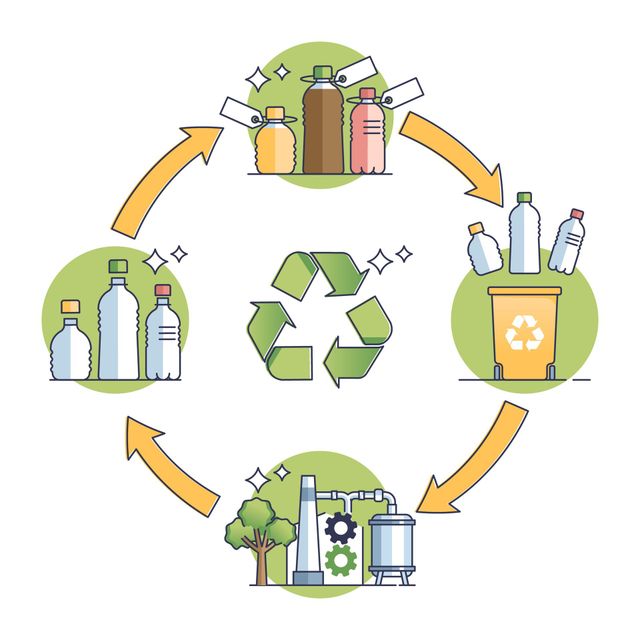
Minimizing Packaging Waste Through Design
Recycling Revolution recognizes that reducing waste starts with clever design. Their team collaborates closely with clients to optimize packaging size and shape, eliminating unnecessary materials and reducing overall volume. This approach not only minimizes waste but also lowers transportation costs, contributing to a smaller carbon footprint. They advocate for minimalist designs, prioritizing functionality and aesthetics without compromising on sustainability.
Streamlining the Recycling Process
Many eco-conscious brands encounter challenges with the actual recycling process. Recycling Revolution aims to simplify this by designing packaging that is easily recyclable and clearly labelled with recycling instructions. They work with recycling facilities to ensure their packaging is compatible with existing infrastructure, and they’re actively involved in promoting recycling initiatives and educational programs to increase consumer awareness and participation.
Transparency and Traceability in the Supply Chain
Transparency is a cornerstone of Recycling Revolution’s philosophy. They provide detailed information about the origin of their materials, the manufacturing process, and the carbon footprint associated with their packaging. This level of openness allows clients and consumers to make informed decisions and trust in the company’s commitment to sustainability. They use blockchain technology to track their materials throughout the supply chain, enhancing accountability and ensuring responsible sourcing practices.
Partnerships and Collaboration for a Broader Impact
Recycling Revolution doesn’t operate in isolation. They actively seek partnerships with other businesses, organizations, and research institutions to amplify their impact. These collaborations extend their reach, enabling them to share knowledge, resources, and best practices within the broader sustainability community. This collaborative spirit underscores their belief that tackling the global packaging waste crisis requires a collective effort.
Investing in Research and Development for Future Innovations
Recycling Revolution is committed to continuous improvement. They dedicate significant resources to research and development, exploring new bio-based materials, innovative packaging designs, and advanced recycling technologies. This forward-thinking approach ensures they remain at the forefront of the sustainable packaging industry, constantly pushing the boundaries of what’s possible and setting new standards for environmental responsibility.
Educating Consumers and Promoting Sustainable Practices
Beyond providing sustainable packaging, Recycling Revolution is dedicated to educating consumers about the importance of recycling and responsible waste management. They develop educational materials, participate in industry events, and collaborate with influencers to raise awareness and encourage sustainable practices. This commitment to education is crucial in driving widespread adoption of eco-friendly packaging and fostering a culture of sustainability.
Measuring and Reporting Environmental Impact
Recycling Revolution doesn’t simply make claims about their sustainability; they rigorously measure and report their environmental impact. They utilize lifecycle assessment methodologies to track key metrics like greenhouse gas emissions, water usage, and waste generation. This data-driven approach allows them to identify areas for improvement and demonstrate the tangible environmental benefits of their packaging solutions to their clients and stakeholders.
Commitment to a Circular Economy
Ultimately, Recycling Revolution’s vision extends beyond simply reducing waste; they strive to create a true circular economy for packaging. This means designing packaging that can be easily reused, recycled, or composted, minimizing reliance on virgin materials and reducing the overall environmental footprint. Their long-term goal is to transform the packaging industry, making sustainability the norm rather than the exception. Click here to learn about eco-friendly packaging recycling.
Unlock Your Body’s Healing Power Natural Ways
The Power of Nutrition
Your body is a complex machine, and like any machine, it needs the right fuel to function optimally. A diet rich in whole, unprocessed foods is fundamental to unlocking your body’s natural healing capabilities. Think vibrant fruits and vegetables bursting with vitamins, minerals, and antioxidants, which combat free radicals and protect your cells from damage. Lean proteins, like fish, poultry, and legumes, provide the building blocks for repair and regeneration. Healthy fats, such as those found in avocados, nuts, and olive oil, are essential for hormone production and cell membrane health. By nourishing your body with nutrient-dense foods, you’re providing it with the raw materials it needs to heal efficiently and effectively.
The Importance of Hydration
Water is often overlooked, but it’s crucial for virtually every bodily function, including detoxification, nutrient transport, and temperature regulation. Dehydration can impair your body’s ability to heal and can exacerbate existing health problems. Aim to drink plenty of water throughout the day – the recommended amount varies depending on factors like activity level and climate, but a good guideline is to listen to your body’s thirst cues. Infuse your water with fresh fruits and herbs for an extra boost of flavor and nutrients.

Stress Reduction Techniques
Chronic stress takes a significant toll on your physical and mental well-being, weakening your immune system and hindering your body’s natural healing processes. Finding healthy ways to manage stress is paramount. Consider incorporating mindfulness practices like meditation or yoga into your daily routine. These techniques can help calm your nervous system, reduce cortisol levels (the stress hormone), and promote a sense of inner peace. Other stress-reducing activities include spending time in nature, listening to calming music, engaging in hobbies you enjoy, and getting enough sleep.
The Benefits of Sleep
Sleep is not a luxury; it’s a biological necessity. During sleep, your body repairs and rejuvenates itself. Growth hormone, essential for cell regeneration and tissue repair, is primarily released during sleep. Lack of sleep weakens your immune system, making you more susceptible to illness and slowing down the healing process. Aim for 7-9 hours of quality sleep per night. Establish a regular sleep schedule, create a relaxing bedtime routine, and ensure your sleep environment is dark, quiet, and cool.
Harnessing the Power of Movement
Regular physical activity boosts your circulation, improves lymphatic drainage (which helps remove toxins), and strengthens your immune system. Exercise doesn’t have to be intense; even moderate activity, like brisk walking or cycling, can make a significant difference. Find an activity you enjoy and aim for at least 30 minutes of moderate-intensity exercise most days of the week. Remember to listen to your body and avoid pushing yourself too hard, especially if you’re recovering from an injury or illness.
The Role of Gut Health
Your gut microbiome plays a critical role in overall health and well-being, including your body’s ability to heal. A diverse and balanced gut flora supports immune function, reduces inflammation, and improves nutrient absorption. Consume foods rich in probiotics, such as yogurt, kefir, and sauerkraut, to support the growth of beneficial gut bacteria. Prebiotics, found in foods like onions, garlic, and bananas, feed these beneficial bacteria. Limit your intake of processed foods, sugar, and unhealthy fats, as these can disrupt the delicate balance of your gut microbiome.
The Importance of Mind-Body Connection
Your mind and body are intricately connected. Negative emotions like stress, anxiety, and depression can negatively impact your physical health, while positive emotions can enhance your body’s healing abilities. Cultivate a positive mindset through practices like gratitude journaling, spending time with loved ones, engaging in activities that bring you joy, and seeking professional help when needed. A positive and optimistic outlook can significantly improve your overall well-being and enhance your body’s natural healing power.
Seeking Professional Guidance
While these natural approaches can significantly contribute to your body’s healing capabilities, it’s crucial to remember that they are not a replacement for professional medical advice. If you have a health concern, it’s essential to consult with a doctor or other qualified healthcare professional. They can provide a proper diagnosis, recommend appropriate treatment, and help you develop a comprehensive healthcare plan that incorporates both conventional and complementary therapies. Read also about alternative & holistic health solutions.
Eco-Friendly Building The Latest Materials
Bamboo: A Sustainable and Strong Alternative
Bamboo is rapidly becoming a popular choice in eco-friendly construction. It’s incredibly strong, lightweight, and grows much faster than traditional lumber, making it a highly renewable resource. Beyond its structural uses in flooring, scaffolding, and even entire buildings, bamboo’s versatility extends to creating beautiful and durable furniture and interior finishes. Its aesthetic appeal, combined with its sustainability, makes it a compelling option for environmentally conscious builders.
Reclaimed Wood: Giving Old Lumber a New Life
Reclaimed wood offers a unique blend of sustainability and character. Salvaged from old buildings, barns, or even railway sleepers, this material reduces the demand on newly harvested timber. Each piece carries its own history, adding a distinct charm to any structure. The process of reclaiming wood, however, requires careful attention to ensure the lumber is properly treated and free from harmful substances. The result, though, is a beautiful and eco-conscious building material with a significantly lower carbon footprint.
Mycelium: The Future of Insulation and Building Materials
Mycelium, the root structure of mushrooms, is emerging as a revolutionary material in sustainable construction. Grown from agricultural waste, this remarkable substance can be molded into various shapes and forms, offering excellent insulation properties. It’s lightweight, fire-resistant, and completely biodegradable, making it an ideal choice for environmentally conscious projects. While still relatively new to the market, mycelium’s potential for transforming the construction industry is immense.
Hempcrete: A Sustainable and Breathable Alternative to Concrete
Hempcrete, a composite material made from hemp hurds (the woody core of the hemp plant) and a lime binder, offers a compelling alternative to traditional concrete. This naturally breathable material provides excellent insulation, regulates humidity, and boasts a low carbon footprint. Its lightweight nature simplifies construction, and its ability to sequester carbon dioxide further enhances its environmental benefits. Although its use is still growing, hempcrete is rapidly gaining popularity among eco-conscious builders.
Recycled Plastics: Turning Waste into Valuable Resources
Plastic waste is a significant environmental concern, but innovative technologies are transforming this problem into a solution. Recycled plastics are increasingly used in construction, creating durable and weather-resistant materials for things like decking, fencing, and even bricks. The process reduces landfill waste and provides a valuable alternative to virgin plastic, minimizing the environmental impact of the building process. Different types of plastics offer varied properties, allowing builders to choose the most suitable material for specific applications.
Straw Bales: An Affordable and Eco-Friendly Choice
Straw bale construction offers a simple, cost-effective, and eco-friendly approach to building. Straw bales provide excellent insulation, and the construction process is relatively straightforward. This method has a low embodied energy compared to conventional building materials, and the bales themselves are a readily available and renewable resource. The construction, however, requires specific techniques to ensure proper moisture management and pest control. It’s a unique method that’s gaining popularity among those seeking affordable and sustainable building solutions.
Cork: A Versatile and Sustainable Material
Cork, harvested from the bark of the cork oak tree without harming the tree itself, is a remarkably versatile and sustainable material. It’s lightweight, fire-resistant, and an excellent insulator, making it suitable for flooring, wall coverings, and even roofing applications. Cork is also naturally waterproof and resistant to pests, adding to its appeal for eco-friendly construction. Its unique texture and appearance provide a natural aesthetic touch to any project.
Rammed Earth: A Timeless and Sustainable Technique
Rammed earth, a centuries-old building technique, is experiencing a resurgence in popularity due to its sustainability and cost-effectiveness. This method involves compacting layers of soil, often stabilized with cement or lime, into walls. It’s a low-energy process using locally sourced materials, reducing transportation costs and emissions. The resulting structure offers excellent thermal mass, providing natural insulation and temperature regulation. However, it requires specialized skills and knowledge to ensure the structural integrity of the building.
Cross-Laminated Timber (CLT): Engineered Wood for Modern Buildings
Cross-Laminated Timber (CLT) is an engineered wood product created by bonding layers of lumber together in alternating directions. This creates an incredibly strong and stable building material, ideal for creating tall and sustainable structures. CLT offers superior strength-to-weight ratio than traditional lumber, allowing for innovative architectural designs while reducing the amount of wood required. The use of sustainably sourced timber further enhances its eco-friendly credentials. It’s rapidly becoming a popular choice for eco-conscious high-rise constructions. Click here for a list of sustainable building materials.
Kingston’s Farm-to-Table Gem [Restaurant Name]
A Kingston Culinary Oasis: The Farm-to-Table Philosophy
Nestled in the heart of Kingston, [Restaurant Name] isn’t just a restaurant; it’s a culinary experience grounded in the principles of farm-to-table dining. From the moment you step inside, you’re enveloped in an atmosphere that celebrates fresh, local ingredients and the passionate people who cultivate them. The restaurant’s commitment to sourcing produce, meats, and dairy directly from nearby farms is evident in every dish, showcasing the vibrant flavors of the region.
Sourcing the Finest Ingredients: Local Partnerships
The backbone of [Restaurant Name]’s success lies in its strong relationships with local farmers and producers. The chefs work closely with these individuals, building a network of trust and understanding. This collaborative approach ensures not only the highest quality ingredients but also a sustainable approach to food production. They often feature seasonal menus, highlighting the best of what each season has to offer, ensuring dishes are always bursting with freshness and flavor.

The Menu: A Celebration of Seasonal Bounty
The menu at [Restaurant Name] is a testament to the seasonality of the ingredients. Expect ever-changing dishes that showcase the best of what local farms have to offer. One might find succulent roasted chicken sourced from a nearby farm, accompanied by vibrant seasonal vegetables harvested just hours before. Perhaps a delicate pasta dish infused with herbs grown in a local garden will grace the menu, or maybe a hearty stew highlighting root vegetables gathered from a nearby farm.
The Culinary Team: Passion and Expertise
Behind the delicious food lies a team of passionate and incredibly talented chefs. Their expertise is evident in the skillful preparation and presentation of each dish. They possess a deep understanding of flavor profiles and culinary techniques, using simple, yet masterful, techniques to allow the natural flavors of the ingredients to shine through. Their commitment to freshness translates to an unforgettable dining experience.
The Ambiance: Rustic Charm Meets Modern Elegance
The restaurant itself is a beautifully curated space, blending rustic charm with modern elegance. The warm, inviting atmosphere makes it the perfect setting for a romantic dinner, a family gathering, or a celebratory meal with friends. The décor is understated, allowing the food to take center stage, while still creating a memorable dining experience. The careful selection of artwork and furnishings all contribute to the overall ambiance.
Beyond the Plate: Sustainability and Community
Beyond its commitment to farm-to-table dining, [Restaurant Name] is actively involved in supporting the local community and promoting sustainable practices. They often collaborate with local organizations, participating in events that benefit the region. This dedication extends to their commitment to minimizing their environmental impact through responsible sourcing and waste reduction strategies.
More Than a Meal: An Experience
Dining at [Restaurant Name] is more than just enjoying a delicious meal; it’s an immersive culinary experience. It’s about connecting with the land, the farmers, and the community that brings your food to the table. It’s about appreciating the artistry of the chefs and the simple beauty of fresh, locally sourced ingredients. It’s an experience that leaves you feeling nourished not just in body, but also in spirit.
A Kingston Treasure: Worth the Visit
In the heart of Kingston, [Restaurant Name] stands as a testament to the power of farm-to-table dining. It’s a place where passion, community, and incredible food intersect to create an unforgettable experience. If you’re looking for a truly special dining experience in Kingston, look no further. It’s a place you’ll want to return to again and again. Click here for information about farm-to-table dining in Kingston, NY.
Access Justice Faster AI in Legal Research
The Rise of AI in Legal Research
The legal profession, long known for its reliance on meticulous research and detailed analysis, is undergoing a significant transformation thanks to the advent of artificial intelligence (AI). AI-powered tools are rapidly changing how legal professionals conduct research, offering faster, more efficient, and often more comprehensive results than traditional methods. This shift isn’t just about saving time; it’s about fundamentally altering the accessibility and affordability of legal services, potentially leveling the playing field for individuals and smaller firms.
Access Justice Faster: A Focus on Efficiency
One of the most immediate benefits of AI in legal research is increased efficiency. Imagine spending hours sifting through countless case laws, statutes, and regulations to find relevant precedents. AI-powered platforms can perform this task in a fraction of the time, using sophisticated algorithms to identify and prioritize the most pertinent information. This allows lawyers to focus on strategic thinking, client communication, and other higher-level tasks, ultimately improving productivity and case management.

Beyond Keyword Searches: Understanding Context and Nuance
Traditional legal research often relies heavily on keyword searches, which can be limiting and often miss relevant documents due to variations in terminology or phrasing. AI, however, goes beyond simple keyword matching. Advanced algorithms can understand the context and nuances of legal language, identifying relevant documents even if they don’t contain the exact keywords used in the search query. This more sophisticated approach significantly improves the recall rate, ensuring that lawyers don’t overlook crucial information.
Predictive Analysis: Anticipating Legal Outcomes
Some AI-powered legal research tools are taking the process a step further by incorporating predictive analytics. By analyzing vast datasets of legal precedents and outcomes, these tools can predict the likely success rate of a case based on various factors, such as jurisdiction, legal precedents, and the strength of the evidence. This predictive capability allows legal professionals to make more informed decisions about case strategy, settlement negotiations, and overall litigation planning.
Democratizing Access to Justice
The increased efficiency and improved accuracy offered by AI in legal research have significant implications for access to justice. These tools can help level the playing field by making legal research more accessible to individuals and smaller firms who may not have the resources to hire extensive research teams. This democratizing effect can empower individuals to better understand their legal rights and navigate the complexities of the legal system with greater confidence.
Addressing Concerns and Challenges
While AI offers tremendous potential for legal research, it’s important to acknowledge some concerns. Data bias in training datasets can lead to skewed results, and the potential for AI to perpetuate existing inequalities within the legal system needs careful consideration. Moreover, the reliance on AI-generated information requires a critical evaluation of the outputs, ensuring that human oversight and legal expertise remain central to the research process. Developing robust ethical guidelines and ensuring transparency in the use of AI are crucial to mitigate these risks.
The Future of Legal Research: A Human-AI Partnership
The future of legal research is likely to involve a collaborative partnership between humans and AI. AI will handle the heavy lifting of information retrieval and analysis, freeing up legal professionals to focus on the strategic and human aspects of the law. This collaboration will lead to more efficient, effective, and equitable legal services, ultimately benefiting all stakeholders involved in the legal process. The key lies in harnessing the power of AI responsibly, ensuring its use complements and enhances, rather than replaces, human judgment and expertise.
Beyond Research: Expanding AI’s Role in Law
The applications of AI in the legal field extend far beyond research. AI is being used in areas like contract review, due diligence, and even legal writing. As AI technology continues to evolve, we can expect even more innovative applications that will further streamline legal processes and improve access to justice. The integration of AI is transforming the legal landscape, offering a promising future for both legal professionals and the clients they serve. Read more about AI in legal research platforms.
Smart Factories AI’s Revolution in Manufacturing
The Dawn of Intelligent Automation
The manufacturing landscape is undergoing a seismic shift, driven by the integration of artificial intelligence (AI) into factories. This isn’t just about automating individual tasks; it’s about creating truly smart factories, where AI orchestrates and optimizes the entire production process, from design to delivery. This intelligent automation is leading to unprecedented levels of efficiency, flexibility, and quality, reshaping the future of manufacturing.
Predictive Maintenance: Preventing Downtime Before it Happens
One of the most impactful applications of AI in smart factories is predictive maintenance. By analyzing data from various sensors embedded in machinery, AI algorithms can predict potential equipment failures before they occur. This allows for proactive maintenance, minimizing downtime, reducing repair costs, and ultimately improving overall productivity. Instead of relying on scheduled maintenance, manufacturers can address issues only when necessary, optimizing resource allocation and maximizing uptime.
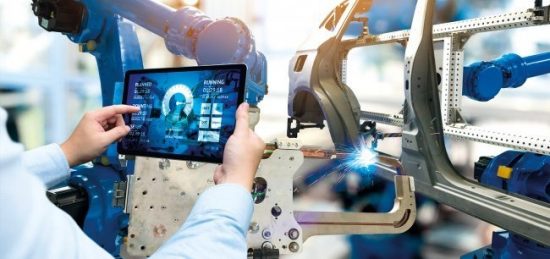
Quality Control: Ensuring Perfection Through AI-Powered Inspection
Maintaining consistent product quality is crucial in today’s competitive market. AI-powered vision systems are revolutionizing quality control by automating the inspection process with incredible accuracy. These systems can identify even the slightest defects that might be missed by human inspectors, leading to higher quality products and reduced waste. This real-time feedback loop allows for immediate adjustments to the production process, preventing further defects and ensuring consistent quality.
Optimizing Supply Chains: From Raw Materials to Finished Goods
Smart factories leverage AI to optimize the entire supply chain, from sourcing raw materials to delivering finished goods. AI algorithms can analyze vast amounts of data, including market trends, supplier performance, and transportation logistics, to predict demand, optimize inventory levels, and streamline the entire supply chain process. This leads to reduced lead times, improved inventory management, and lower costs.
Enhanced Production Planning and Scheduling: Maximizing Efficiency
AI is also transforming production planning and scheduling. By analyzing real-time data on machine availability, material inventory, and order demands, AI algorithms can create optimal production schedules that minimize lead times, maximize resource utilization, and improve overall factory efficiency. This dynamic scheduling capability allows manufacturers to adapt quickly to changing market demands and unforeseen events, ensuring that production remains efficient and responsive.
Robotics and Collaborative Robots (Cobots): Human-Machine Collaboration
The integration of robotics and collaborative robots (cobots) is another key element of smart factories. While traditional industrial robots perform repetitive tasks in isolation, cobots work alongside human workers, enhancing their capabilities and improving safety. AI empowers these robots with advanced capabilities like object recognition, path planning, and human-robot interaction, allowing for flexible and collaborative automation.
Data Analytics and Decision Making: The Power of Insights
The heart of a smart factory is its ability to collect, analyze, and interpret vast amounts of data. AI-powered analytics tools can uncover valuable insights that can inform strategic decisions, improve processes, and drive continuous improvement. This data-driven approach allows manufacturers to identify bottlenecks, optimize resource allocation, and make informed decisions based on real-time information, leading to a more efficient and profitable operation.
The Human Element in the Age of AI
While AI is transforming manufacturing, the human element remains crucial. The focus isn’t on replacing human workers but on augmenting their capabilities. Smart factory technologies empower workers with intelligent tools, enabling them to focus on higher-level tasks such as problem-solving, innovation, and managing complex systems. Reskilling and upskilling initiatives are essential to ensure that the workforce can adapt and thrive in this evolving environment.
The Future of Smart Factories: A Vision of Continuous Improvement
The journey towards truly smart factories is ongoing, with ongoing technological advancements pushing the boundaries of what’s possible. As AI continues to evolve, we can expect even more sophisticated applications in manufacturing, leading to greater efficiency, flexibility, sustainability, and competitiveness. The future of manufacturing is intelligent, adaptive, and human-centered. Read also about AI-enabled smart factories.
Japan’s Interest Rates 2025 Outlook & Economic Impact
Japan’s Current Monetary Policy Stance
As of late 2023, the Bank of Japan (BOJ) continues to maintain its ultra-loose monetary policy, characterized by negative interest rates on some commercial bank reserves and a commitment to yield curve control (YCC). This means the BOJ actively intervenes in the bond market to keep the 10-year government bond yield around zero. This policy, implemented to stimulate economic growth and combat deflation, has been a cornerstone of Japan’s economic strategy for years. However, the effectiveness and long-term sustainability of this approach remain a subject of ongoing debate, both domestically and internationally.
Global Inflationary Pressures and Their Impact on Japan
The global inflationary environment presents a significant challenge to the BOJ’s current policy. While Japan has experienced relatively subdued inflation compared to other developed nations, rising import costs due to global energy prices and supply chain disruptions are putting upward pressure on prices. This inflationary pressure, while currently moderate, could force a recalibration of the BOJ’s approach in the coming years. The balance between supporting economic growth and controlling inflation will be a key consideration for policymakers.

Potential Shifts in BOJ Policy in 2025
Predicting the BOJ’s actions in 2025 is inherently uncertain, but several scenarios are possible. One possibility is a gradual exit from YCC, potentially involving a slow and controlled increase in long-term interest rates. This approach would aim to minimize market disruption while allowing the BOJ to respond to evolving economic conditions. Another scenario might involve a more abrupt shift, driven by unexpectedly high inflation or a significant change in global economic dynamics. A complete abandonment of negative interest rates is also a possibility, though the timing and execution remain highly debated.
The Yen’s Volatility and its Influence on Interest Rates
The value of the Japanese yen plays a crucial role in shaping the BOJ’s policy decisions. A weakening yen can exacerbate inflationary pressures by increasing import costs, making it more difficult for the BOJ to maintain its ultra-loose stance. Conversely, a strengthening yen could provide some breathing room, allowing for a more gradual adjustment of monetary policy. The yen’s volatility will be a key factor influencing the BOJ’s strategy in the lead-up to and throughout 2025.
Economic Growth Projections for Japan in 2025
Japan’s economic growth outlook for 2025 is subject to considerable uncertainty. Factors such as global economic conditions, domestic consumption patterns, and the success of government structural reform initiatives will all play a role. While sustained, albeit moderate, growth is anticipated by many economists, the pace of expansion remains a key unknown. This uncertainty further complicates the BOJ’s task in balancing growth and inflation management.
Impact of Interest Rate Changes on Businesses and Consumers
Any changes to interest rates in Japan will have significant consequences for businesses and consumers. Higher interest rates could increase borrowing costs for businesses, potentially slowing investment and economic growth. Consumers might also face higher mortgage rates and reduced borrowing capacity. Conversely, lower interest rates, while stimulating borrowing and investment, could potentially fuel inflation if not carefully managed. The impact will depend heavily on the magnitude and speed of any interest rate adjustments.
The Role of Government Fiscal Policy
The BOJ’s monetary policy decisions are intertwined with the government’s fiscal policies. Fiscal stimulus measures can support economic growth, potentially reducing the need for aggressive monetary tightening. However, excessive government spending could lead to higher inflation and complicate the BOJ’s efforts to control price increases. The coordination between monetary and fiscal policies will be crucial in navigating the economic challenges of 2025.
Risks and Uncertainties for the Japanese Economy
The outlook for Japan’s economy in 2025 is fraught with uncertainties. Geopolitical risks, including the ongoing war in Ukraine and tensions in the Taiwan Strait, could disrupt global supply chains and trigger further inflationary pressures. Domestic factors such as an aging population and shrinking workforce also present challenges to long-term economic growth. The BOJ will need to carefully consider these risks when formulating its monetary policy strategy.
Potential for Unexpected Events and Their Impact
The economic landscape is inherently unpredictable, and unexpected events could significantly impact Japan’s interest rates and economic performance in 2025. Sudden shifts in global commodity prices, unforeseen geopolitical developments, or unexpected changes in domestic political dynamics could all necessitate rapid adjustments in BOJ policy. The ability of the BOJ to adapt to these unforeseen circumstances will be a critical determinant of Japan’s economic success in the coming years. Learn more about the Bank of Japan’s interest rate policy in 2025 here: [link to tankionlineaz.com]

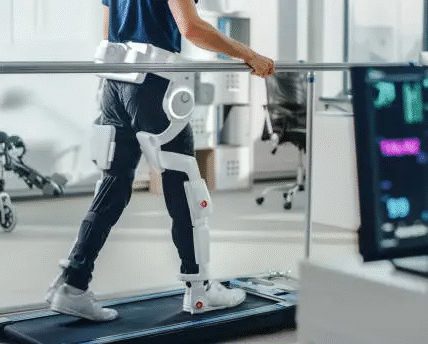


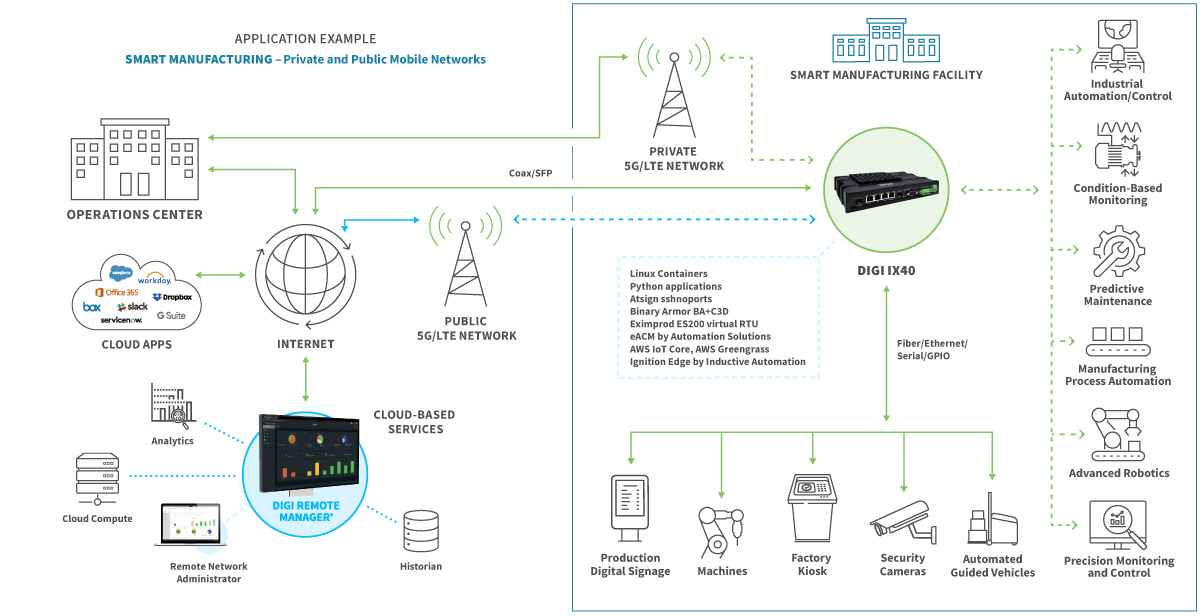
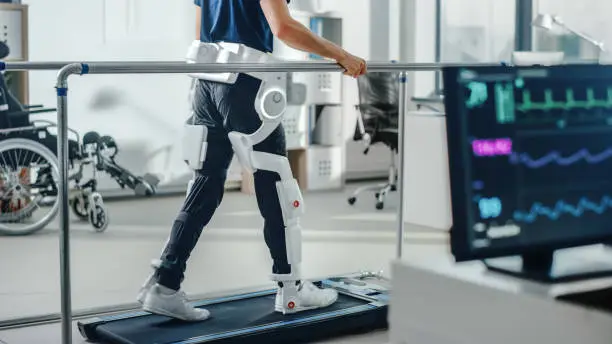
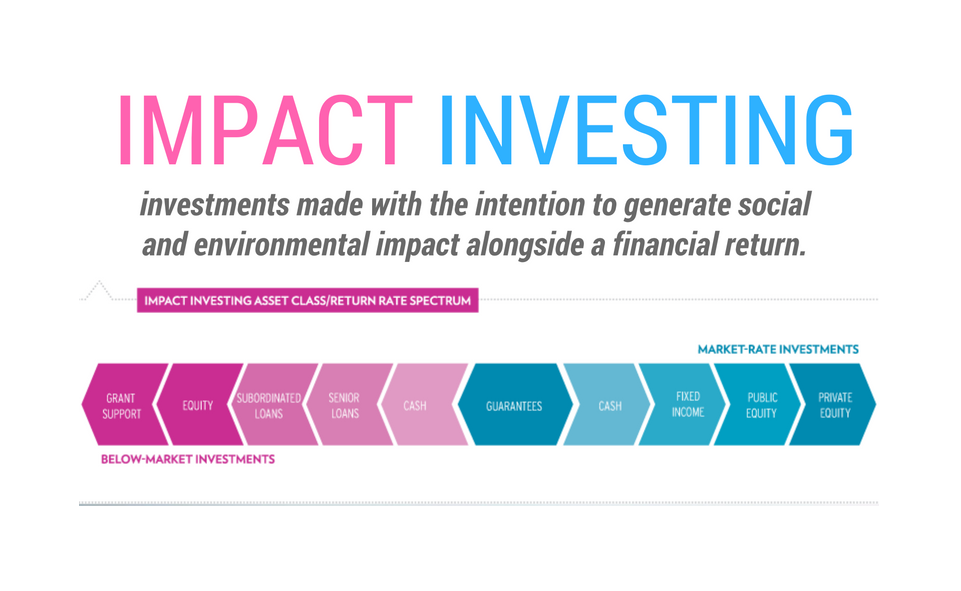

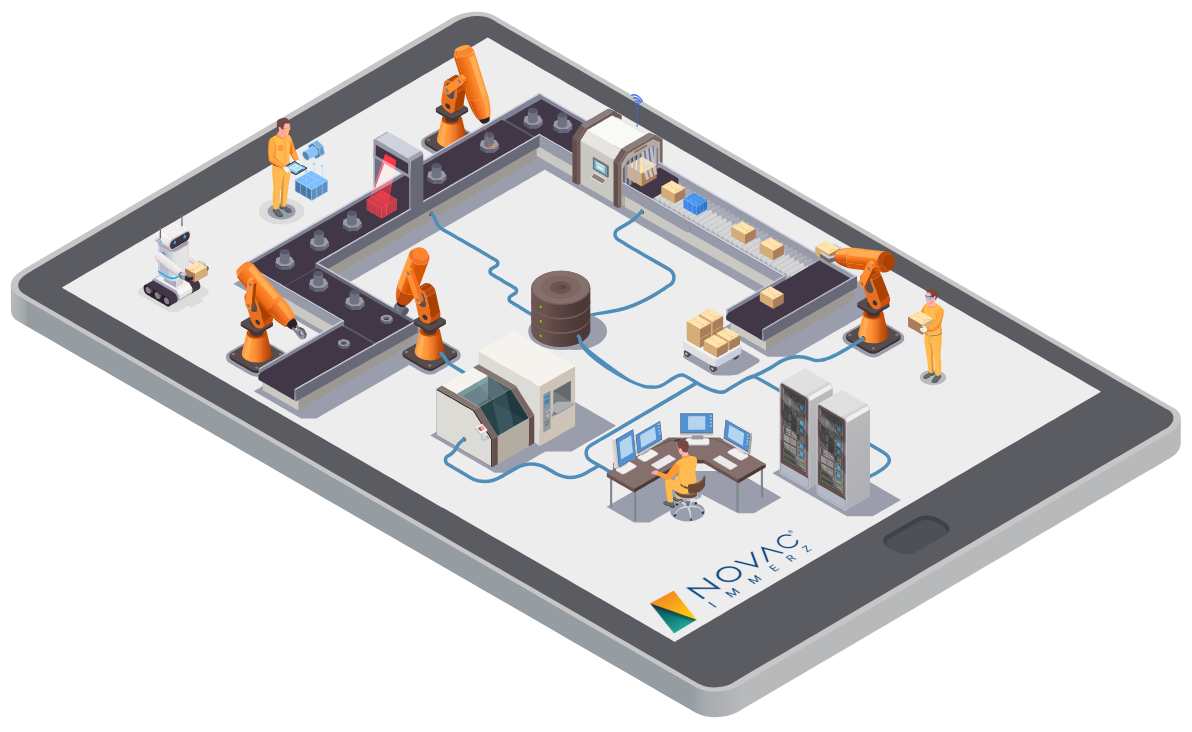










![Kingston’s Farm-to-Table Gem [Restaurant Name] Kingston’s Farm-to-Table Gem [Restaurant Name]](https://assets.hvmag.com/2024/04/hv-may-24-outside-1068x712.jpg)
